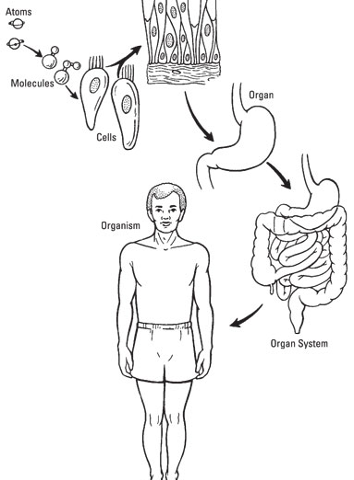The below information was prepared by Eminah Quintyne, volunteer contributor to the 2021 Eat Local Challenge for Lowcountry Local First
Atom – Atoms are made of protons, neutrons, and electrons. Atoms are distinguished from one another by the number of protons in their nucleus. They are the most infinitesimally small unit of matter. Matter is everything. Yes, everything! Your phone, monitor, mouse, desk, etc. Humans are made of billions of atoms. They are the tiniest part of who we are3.
Element – Elements are entirely made out of one type of atom. Examples are Carbon C and Oxygen O. Essentially all elements are one type of atom. The type of atom an element is made out of defines its characteristics. The number of protons in the nucleus of an atom distinguishes one element from another3.
Molecule – Two or more atoms of the same or different element bonded together. Example O2 (same elements), H2O (different elements), and NaCl2 (different elements). Every combination (two or more) of an element is a molecule. An atom is a part of an element3.
- All molecules are NOT compounds, but all compounds ARE molecules.
- Why? A compound is a type of molecule. Within every compound there is a molecule. The term compound is exclusive to the bond of two or more DIFFERENT
- Here is the thing – because a molecule is (accounts for) two or more of the same or different atoms of an element bonded together every combination of an element is a molecule, however a compound is identified as a compound because it accounts for) two different elements bonded together thus ALL molecules are NOT compounds because the term compound is exclusive to the bond of two or more DIFFERENT elements.
- Compounds EXCLUDE the bonds of two of the SAME elements bonded together. For example, Hydrogen gas H2 (same element) is a molecule but it is NOT a compound.
- You can’t identify all molecules as compounds based on the limitations of what makes a compound a compound.
- You can state ALL compounds are molecules because the term molecule accounts for two or more of the same or different atoms bonded together which communicates a compound is a type of molecule.
Compounds – Two or more atoms of different elements bonded together. Examples are H2O (different elements), and NaCl2 (different elements). A compound is a molecule made of atoms from different elements. All compounds are molecules. Remember the periodic table of elements? Elements are entirely made out of one type of atom. The type of atom an element is made out of defines its characteristics. The number of protons in the nucleus of an atom distinguishes an element3.
Cells – Cells are made out of molecules and compounds. There are many varying types of cells. Cells carry out specialized functions and are known as the building blocks of all living things. With a few exceptions almost every cell in the human body contains DNA in the nucleus of the cell (nuclear DNA). Some DNA can be found in mitochondria. DNA provides a set of instructions like a recipe that tells each cell in your body how to function (what to do). There are six primary functions that cells provide among them are, structure and support for our bodies, nutrient absorption, energy production, and growth via (mitosis)14.
Tissues – Tissues are made out of groups of cells that function together as a unit. Nervous, connective, muscle, and epithelial are the four primary types of body tissue14.
Organs – Are formed by the grouping of body tissue. Tissues make up organs like your liver, kidneys, heart, stomach, and intestines etc. 14
Organ Systems – Organs create (make up) organ systems. There are 11 organ systems in the human body. Among them are the digestive, endocrine, muscular, cardiovascular, and integumentary systems14.
Organism – Human beings are organisms made of a trillion different cells 14

